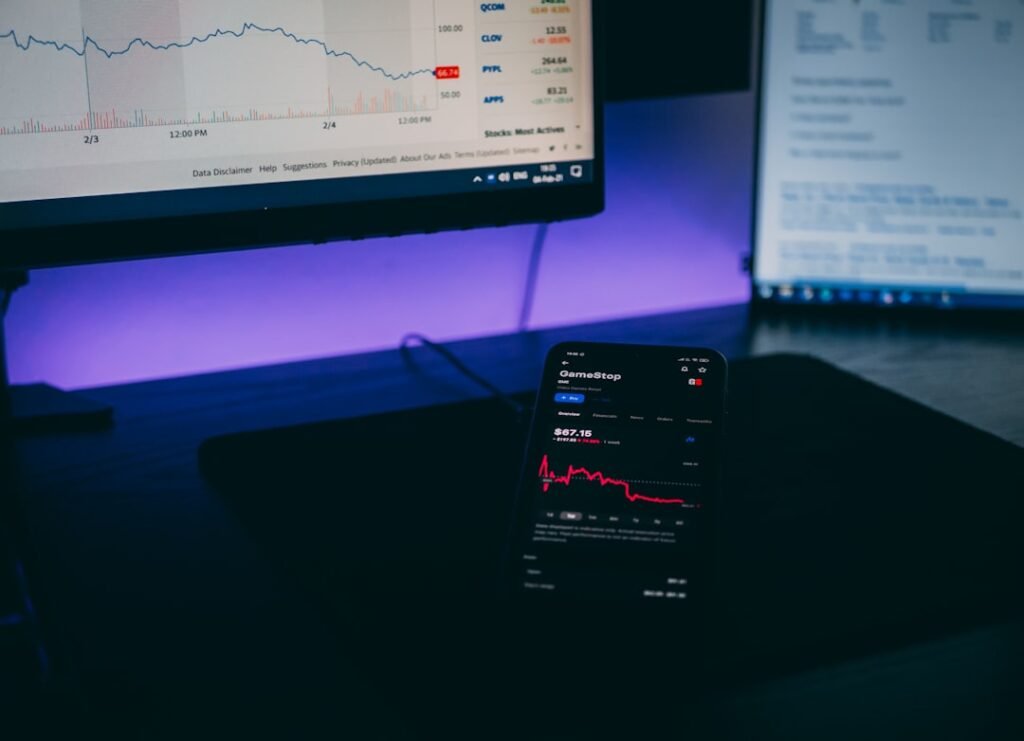Virtual Assets Demystified: Know What You're Really Investing In
The Explosive World of Digital Value
In today's rapidly evolving financial landscape, terms like cryptocurrency, NFTs, and digital assets dominate headlines. Yet, confusion reigns supreme. What exactly are virtual assets? How do they differ from digital assets or crypto assets? More importantly, why does this classification matter for investors and regulators alike? Understanding the precise definitions and classifications isn't just academic – it's fundamental to navigating risks, complying with regulations, and making informed investment decisions in this high-stakes arena.
The FATF Definition: The Global Standard
The Financial Action Task Force (FATF), the inter-governmental body setting international standards to combat money laundering and terrorist financing, provides the critical global benchmark. According to the FATF:
A virtual asset is "a digital representation of value that can be digitally traded, transferred and used for payment or investment purposes."
This definition is enshrined in the FATF's global recommendations, adhered to by over 200 countries and jurisdictions. It forms the bedrock of international efforts to prevent organized crime, corruption, and terrorism financing within this sector.
Key Characteristics of a Virtual Asset (Per FATF)
- Digital Representation: It exists purely in digital form, not as a physical object.
- Value: It possesses inherent or ascribed value within a specific environment or ecosystem.
- Digital Tradability & Transferability: It can be bought, sold, or exchanged digitally between parties.
- Utility: It can be used for payment (buying goods/services) or investment (held with the expectation of profit).
Common Examples: Bitcoin, Litecoin, Ethereum, Dogecoin (virtual currencies), certain stablecoins, and potentially some gaming tokens or NFTs if they meet the criteria above.
What the FATF Definition Excludes
Crucially, the FATF definition does not include:
- Digital representations of traditional fiat currencies (like a digital USD in your bank app).
- Digital representations of securities (stocks, bonds) or other traditional financial assets already covered by other regulations.
- Assets that are only declarative records of ownership without inherent tradable value or payment/investment utility.
Virtual Assets vs. Digital Assets vs. Crypto Assets: Untangling the Web
While often used interchangeably, these terms have distinct meanings, especially from regulatory and technical perspectives. Understanding the hierarchy is key:
- Virtual Assets (Broadest Category – FATF Focus): Encompasses any digital representation of value that is digitally tradable/transferable and usable for payment/investment. This includes assets both on and off the blockchain. Examples: Bitcoin (on blockchain), certain closed-loop gaming tokens (potentially off blockchain if they meet criteria).
- Digital Assets (Subset of Virtual Assets): Specifically refers to virtual assets that are stored and traded on a blockchain or other distributed ledger technology (DLT). All digital assets are virtual assets, but not all virtual assets are necessarily digital assets (if they exist outside DLT). Examples: Bitcoin, Ethereum, NFTs, utility tokens.
- Crypto Assets (Subset of Digital Assets): A specific type of digital asset whose value is fundamentally derived from its use of cryptography and distributed ledger technology. Its core value proposition is tied to the technological features of the blockchain (e.g., security, decentralization, transparency). Examples: Bitcoin, Ethereum (native token), many other cryptocurrencies.
Visualizing the Relationship
- All Crypto Assets are Digital Assets.
- All Digital Assets are Virtual Assets.
- BUT: Not all Virtual Assets are Digital Assets (e.g., some non-blockchain gaming tokens might qualify as virtual assets if used for payment/investment).
- BUT: Not all Digital Assets are Crypto Assets (e.g., an NFT might be a digital asset on a blockchain, but its primary value comes from representing unique ownership of art, not inherently from the cryptography/ledger tech itself).
Why the Distinction Matters
- Understanding Value Source: Classification hints at the primary driver of an asset's value. Is it utility within a system (virtual asset), the blockchain infrastructure (digital asset), or the cryptographic security and decentralization (crypto asset)?
- Regulatory Scrutiny: Regulatory bodies like the FATF, IRS, and securities commissions use these definitions to determine which rules apply. For instance:
- Virtual Assets: Primarily fall under FATF recommendations targeting money laundering/terrorist financing risks via VASPs.
- Securities Regulation: An asset classified as a "security" (based on the Howey Test or similar) faces entirely different regulatory requirements (like registration, disclosure) than a pure "currency" or "commodity". Knowing if an asset is a virtual/digital/crypto asset is the first step in this analysis.
- Taxation: Tax authorities (like the IRS) categorize assets differently (e.g., property vs. currency) impacting how gains are calculated and reported.
The NFT Conundrum: Virtual Asset or Not?
Non-Fungible Tokens (NFTs) present a fascinating edge case explicitly addressed by the FATF. By their nature, NFTs are unique digital assets typically stored on a blockchain (making them digital assets).
- Generally NOT Virtual Assets (Per FATF): The FATF states that NFTs are generally not considered virtual assets unless they are used for payment or investment purposes within their specific context.
- The Critical Test: If an NFT functions primarily as a collectible or proof of ownership (e.g., digital art, in-game items representing unique skins), it falls outside the FATF's virtual asset definition. However, if that same NFT is regularly traded like a security (investment purpose) or accepted widely as payment for goods/services, it may cross the threshold and be treated as a virtual asset, bringing it under FATF's VASP regulatory scope. The FATF intentionally leaves room for interpretation based on the NFT's actual use.
The Gatekeepers: Virtual Asset Service Providers (VASPs)
Regulation focuses heavily not just on the assets themselves, but crucially on the entities facilitating their movement. This is where Virtual Asset Service Providers (VASPs) come in. The FATF defines a VASP as any natural or legal person conducting one or more of the following activities "as a business" for or on behalf of another person:
- Exchange between virtual assets and fiat currencies (e.g., crypto exchanges like Coinbase, Binance).
- Exchange between one or more forms of virtual assets (e.g., swapping Bitcoin for Ethereum).
- Transfer of virtual assets (e.g., wallet providers facilitating sends/receives).
- Safekeeping and/or administration of virtual assets or instruments enabling control over them (e.g., custodial wallets, crypto custody services).
- Participation in and provision of financial services related to an issuer's offer and/or sale of a virtual asset (e.g., ICO/IEO platforms, certain broker-dealers).
Key Points on VASPs
- Broad Application: The definition applies regardless of the entity's operational model, technology, or ledger design. If they perform the function, they are likely a VASP.
- Exclusions: Entities already covered under other FATF recommendations (like traditional banks handling digital securities) are excluded. Infrequent, non-commercial activities are also excluded.
- The Regulatory Frontline: VASPs are the primary focus of FATF's anti-money laundering (AML) and counter-terrorist financing (CFT) efforts for the virtual asset sector. Regulating VASPs effectively is seen as the most viable way to mitigate illicit finance risks within the ecosystem. This includes implementing Know Your Customer (KYC) procedures, securely storing customer information, monitoring transactions, and reporting suspicious activity – including compliance with the challenging "Travel Rule" (requiring secure transmission of originator and beneficiary information during transfers).
The Regulatory Challenge: A Two-Way Street
Regulating VASPs and the virtual asset space presents significant hurdles:
- For Authorities: National regulators must rapidly develop expertise in complex, fast-evolving technologies like blockchain and cryptography to understand the risks and oversee the sector effectively.
- For VASPs: Service providers must understand and implement intricate financial regulations (AML/CFT) that were often designed for traditional finance, adapting them to decentralized and pseudonymous environments. Complying with the Travel Rule requires significant technological development.
- Collaboration is Key: The FATF actively engages with the VASP sector through initiatives like annual fintech/regtech forums and a dedicated Contact Group. This partnership aims to build mutual understanding, explain requirements, monitor industry developments, and foster technological solutions to meet regulatory goals like the Travel Rule. The FATF also provides risk-based guidance for governments and industry.
Why Classification Matters for YOU as an Investor
Beyond regulatory compliance for businesses, understanding these classifications empowers individual investors:
- Risk Assessment: Knowing if an asset is primarily a virtual currency, a security-like digital asset, or a unique NFT helps gauge its volatility, liquidity, and specific risks (e.g., regulatory crackdowns, technological obsolescence, market manipulation).
- Tax Implications: As mentioned, classification impacts how gains are taxed (e.g., as capital gains or ordinary income, different reporting requirements).
- Regulatory Protection: Understanding the landscape helps identify if a platform (VASP) you're using is likely compliant with regulations like KYC/AML, offering some degree of consumer protection compared to unregulated entities.
- Informed Decision Making: Grasping the fundamental nature and regulatory environment of an asset class allows for more strategic investment choices aligned with your risk tolerance and goals.
Navigating the Blurred Lines: Final Thoughts
The world of virtual, digital, and crypto assets is dynamic, and definitions can sometimes feel fluid. A single asset might possess characteristics that place it across multiple categories depending on its design and use case. Regulatory interpretations can also evolve.
However, the core distinctions established by bodies like the FATF provide an essential framework. Virtual Assets are defined by their function as digitally tradable stores of value usable for payment or investment. Digital Assets are a subset tied to blockchain/DLT infrastructure. Crypto Assets derive their core value from cryptographic security and decentralization.
Understanding these classifications is not about memorizing jargon; it's about unlocking critical insights into an asset's inherent value proposition, its regulatory standing, and the associated risks. In the high-reward, high-risk frontier of virtual assets, this knowledge isn't just power – it's essential protection. Before you invest, take the crucial step: understand exactly what you are investing in.












